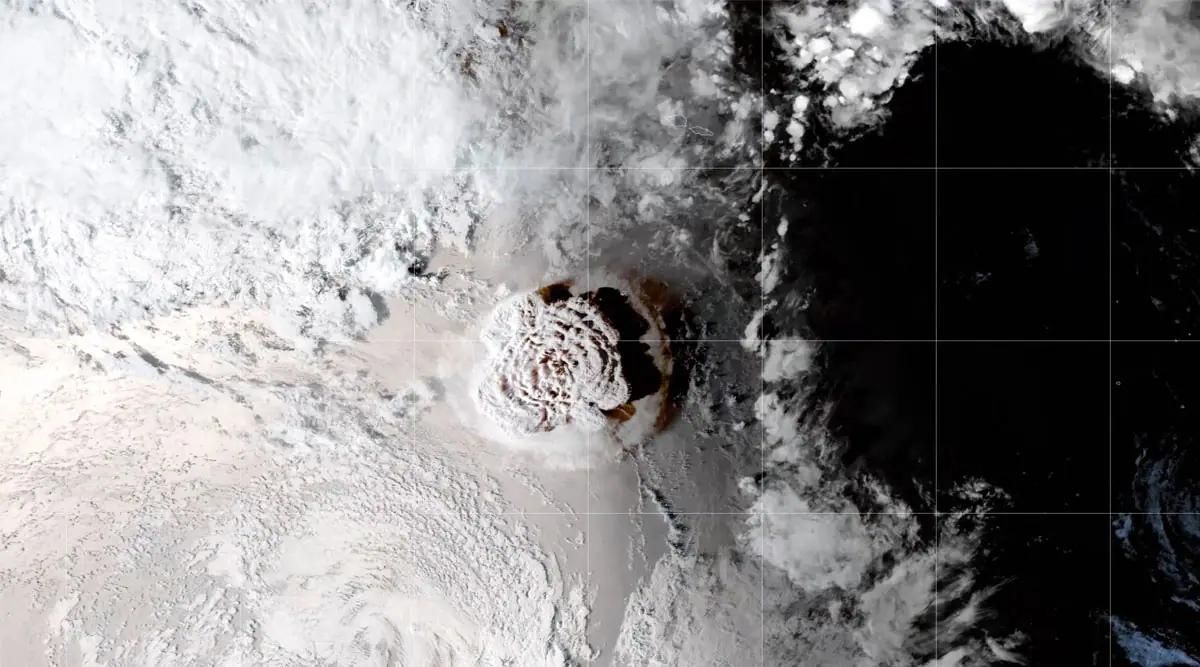The Hunga Tonga-Hunga-Ha’apai volcano erupted on January 15 sending a tsunami racing across the world and letting off a sonic boom that circled the Earth twice. But along with that, the underwater volcano eruption also sent up a massive plume of water vapour into the Earth’s stratosphere. Enough water to fill 58,000 Olympic-sized swimming pools has been sent into the stratosphere, meaning that it could temporarily warm up the planet’s surface.
An atmospheric scientist from NASA’s Jet Propulsion Laboratory in Southern California led a new study that examines the amount of water vapour that the volcano ejected into the stratosphere (the atmospheric layer between 12 and 53 kilometres) above Earth’s surface.
The study published in Geophysical Research Letters estimates that the eruption sent around 146 teragrams (trillion grams) of water vapour into the stratosphere, which is an amount equal to about 10 per cent of the water already present there. The team analysed the data from the Microwave Limb Sounder (MLS) instrument on NASA’s Aura satellite to measure atmosphere gases including water vapour and ozone.
After the eruption, the MLS detected water vapour readings that were “off the charts.” But this event is an anomaly since volcanic eruptions rarely inject so much water into the stratosphere. Only two other eruptions have sent appreciable amounts of water vapour to such altitudes since NASA started taking measurements in the last eighteen years: the 2008 Kasatochi event in Alaska and the 2015 Calbuco eruption in Chile. But the water vapour from those eruptions dissipated quickly whereas the excess water vapour injected by the Tonga eruption could remain in the stratosphere for several years.
This extra water vapour that is the result of the eruption could influence atmospheric chemistry by boosting certain chemical reactions that could temporarily worsen the depletion of the ozone layer. The vapour could also change surface temperatures. Typically, volcanic eruptions cool Earth’s surface by ejecting gases, dust and ash that reflect sunlight back into space.
However, the Tonga eruption instead injected water vapour into the atmosphere, which is a strong greenhouse gas that traps heat. This means that the water vapour in the stratosphere could temporarily heat up the Earth’s surface. But this effect would dissipate when the extra water vapour cycles out of the stratosphere and wouldn’t noticeably exacerbate climate change effects, according to the study.
!function(f,b,e,v,n,t,s)
{if(f.fbq)return;n=f.fbq=function(){n.callMethod?
n.callMethod.apply(n,arguments):n.queue.push(arguments)};
if(!f._fbq)f._fbq=n;n.push=n;n.loaded=!0;n.version=’2.0′;
n.queue=[];t=b.createElement(e);t.async=!0;
t.src=v;s=b.getElementsByTagName(e)[0];
s.parentNode.insertBefore(t,s)}(window, document,’script’,
‘https://connect.facebook.net/en_US/fbevents.js’);
fbq(‘init’, ‘444470064056909’);
fbq(‘track’, ‘PageView’);







